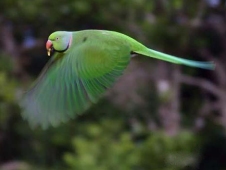
Action at individual sites, or in the wider environment, can go a long way to achieving conservation goals. Sometimes, however, the problems facing individual species call for more targeted responses. Often this starts with research to understand an observed decline. This may identify specific actions that need to be taken, such as control of predators or provision of nest sites. Translocations of populations, or reintroductions from captivity, may often be viewed as a last resort, but can be remarkably successful.
Conducting research to understand conservation needs View case study list
View case study list
The first priority in trying to address population declines in a species is to understand the causes of decline. Where these are not immediately apparent, targeted research may be necessary. Such research needs to look at species at all stages of their life-cycle—in migratory species for example it may be factors at wintering grounds or on migration routes rather than at breeding sites that are causing problems (![]() ,
, ![]() ,
, ![]() ). While sometimes it becomes evident that there are multiple causes of a decline, sometimes a single factor is found to be responsible.
). While sometimes it becomes evident that there are multiple causes of a decline, sometimes a single factor is found to be responsible.
Managing specific populations and addressing threats View case study list
View case study list
Species-specific conservation interventions for highly threatened species may take a variety of forms, from protecting nests (![]() ), creating artificial nest-sites (
), creating artificial nest-sites (![]() ), providing supplementary food (
), providing supplementary food (![]() ,
, ![]() ), translocating birds (
), translocating birds (![]() ), eradicating invasive species (
), eradicating invasive species (![]() ,
, ![]() ,
, ![]() ,
, ![]() ), mitigating incidental mortality in fisheries (
), mitigating incidental mortality in fisheries (![]() ,
, ![]() ) or launching species-specific campaigns and awareness-raising to tackle specific issues (
) or launching species-specific campaigns and awareness-raising to tackle specific issues (![]() ,
, ![]() ).
).
Re-introducing birds where necessary View case study list
View case study list
Captive-breeding is generally regarded a last resort, to be fallen back on when all other attempts at conservation have failed. The ultimate aim of captive-breeding projects is always to support conservation of species in the wild. Reintroduction is usually a difficult, expensive and time-consuming undertaking, but can be successful (![]() ,
, ![]() ,
, ![]() ).
).
Species can be saved from extinction View case study list
View case study list
Where threats are tackled through directed interventions, conservation can succeed. Some species have been brought back from the brink of extinction in spectacular fashion. At least 16 species would undoubtedly have gone extinct in the last decade alone without the conservation action they received (![]() ). However, action is urgently required for many more species; BirdLife’s Preventing Extinctions Programme is tackling this by greatly increasing actions directed specifically at highly threatened birds (
). However, action is urgently required for many more species; BirdLife’s Preventing Extinctions Programme is tackling this by greatly increasing actions directed specifically at highly threatened birds (![]() ).
).